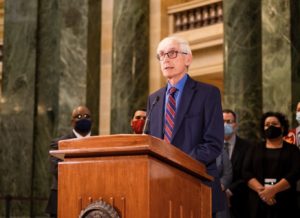Open enrollment grows across Wisconsin to almost 10% of all public-school students
The popularity of Wisconsin’s open-enrollment policies continues to increase, amounting to more than 73,000 children outside their home district – or 9.1% of all public-school students – in…

The popularity of Wisconsin’s open-enrollment policies continues to increase, amounting to more than 73,000 children outside their home district – or 9.1% of all public-school students – in the 2023-24 school year, analysts say.
“Open enrollment has substantial and generally underestimated force in shaping Wisconsin’s school scene,” wrote Alan Borsuk, senior fellow in law and public policy at Marquette Law School.
“With a new state budget cycle about to begin, it is likely that open enrollment will fly under the radar when it comes to legislative attention, controversy or change, and the popular program will continue on its current course.”
‘Eye-catching example’ of St. Francis
Borsuk highlights St. Francis High School along Lake Michigan as “a particularly eye-catching example” of open enrollment’s impact across the Badger State.
“This year, 57% of the students at the school (311 out of 544) are open-enrollment students,” he noted. “In total for the district, 473 students out of 1,103, or 43%, are not residents of St. Francis.”
Families mention several reasons for choosing to place their children outside their home district – including specialty programs, concerns about the home district, and proximity of the outside school to a parent’s workplace.
“Open enrollment is particularly a factor affecting larger districts with overall lower levels of student success,” Borsuk explained when citing recent research. “In 2023-24, according to the state Department of Public Instruction, 5,527 students who live in Milwaukee open enrolled elsewhere, while 2,495 students from elsewhere enrolled into Milwaukee Public Schools (often into specialty and/or higher performing schools).”
Even though Wisconsin allows for open enrollment, parents choosing this option still navigate additional challenges such as available seats, behavioral standards, and transportation, according to Borsuk.
“Students who open enroll have to provide their own transportation to school, but they can enroll into any district in Wisconsin. There are rules — and sometimes a bit of a dance — over how many open-enrollment seats districts allow and who gets in (generally by lottery, if there are more applicants than seats). There are some limitations related to students with special education needs and histories of major behavior problems.”
‘Financial incentives are limited’
The surge in open-enrollment students is even more remarkable, given the financial restrictions for receiving school districts.
“When a student open enrolls, the receiving district receives most (but not all) of the money in state aid and property taxes that would come to a home district,” Borsuk noted. “In other words, the financial incentives are limited for receiving districts. That is why many districts hold down the number of open-enrollment seats they make available or aim to offer seats in classes that are below capacity, which makes the open-enrollment income attractive (compared to getting no revenue for those seats).”
For example, St. Francis estimated it receives about $9,000 for open-enrollment students compared to $11,000 for resident students.
“The district generally doesn’t want to take in open-enrollment students if that means hiring more staff,” Borsuk wrote. “But the students increase the viability particularly of the high school.”
Other states such as West Virginia also saw an increase in open enrollment during the 2023-24 school year.
More than 7,600 students transferred school districts after Gov. Jim Justice signed a new open-enrollment policy into law in March 2023.
“West Virginia’s open-enrollment legislation prevents districts from charging tuition for students to access public schools outside of their neighborhood and establishes a system of checks and balances, ensuring families have the freedom to make decisions about their child’s education,” said Craig Hulse, executive director of yes. every kid.
“A family’s income or zip code shouldn’t matter when it comes to their child’s education. Every kid deserves access to the best education possible – and for too long, residential assignment has prevented this.”



